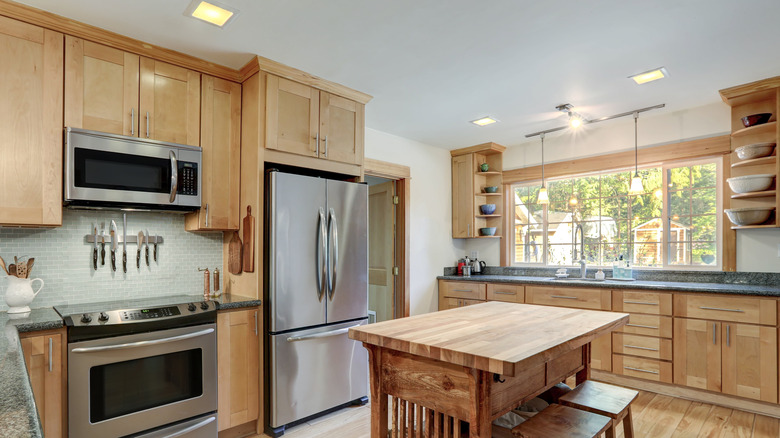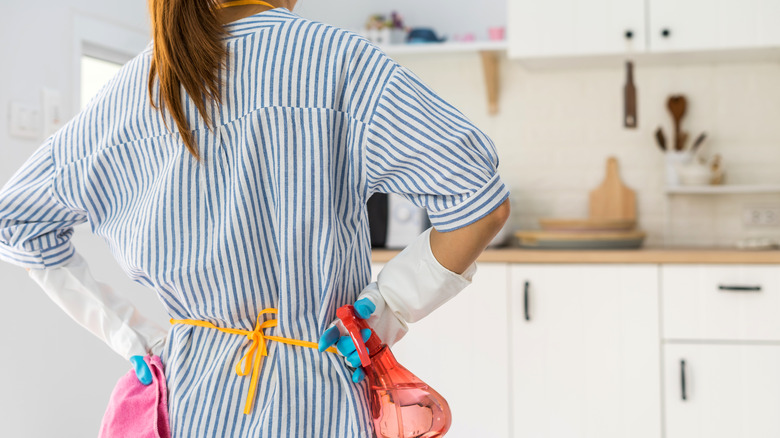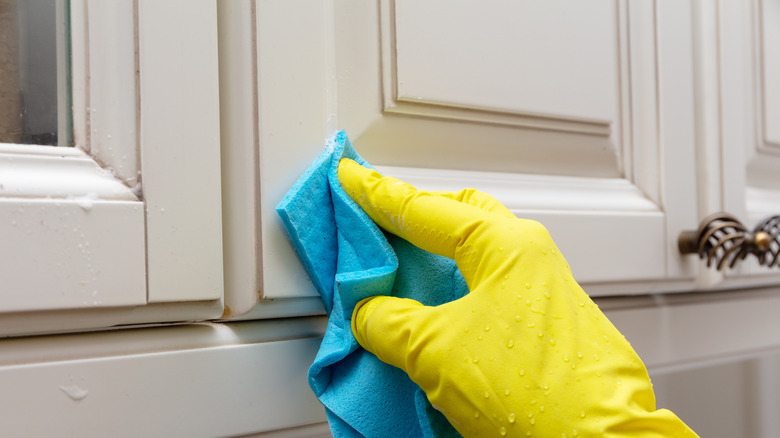The Easiest Way To Clean Your Wood Cabinets
Run a finger across the upper portion of your wood cabinets in the kitchen, and you may encounter grease, grime, and dust that seems to have been caked on for years. That's often an indication you need to clean your cabinets. Regularly cleaning your cabinets helps them look newer and may help protect the wood, allowing them to last longer.
Before you pull out a scrubby, take a step back to consider how you plan to clean these cabinets without causing scratches or other damage to the wood's surface or protective finish. Cabinetdoors.com notes that cleaning cabinets properly doesn't remove the finish on the surface and better preserves the wood. Choose everything from the cloth you plan to use to the type of cleaning detergent carefully to avoid any risk. That said, cleaning your kitchen cabinets doesn't have to be hard or expensive, and you may already have what you need in the home.
Use a natural solution for the safer option
There are multiple ways to clean kitchen cabinets, but using natural methods could be one of the easiest and most effective options that won't damage your wood finish. To do so, make a vinegar solution, says Trends Wood Finishing, which is equal parts of water and white vinegar mixed together. The vinegar can cut through the grime and grease buildup on the cabinets, stripping it off without damaging the wood's finish or varnish underneath.
If you do not want to use vinegar for any reason, they also recommend using a small amount of light soap, like dish soap, but make sure to only use about a teaspoon for each cup of water. The key here is to use a mild soap without any harsh chemicals, as those chemicals can interfere with the finish and create damage that could ultimately warp the wood or damage the finish.
Use the right technique for the job
Put away the steel wool no matter how tempting it is to use it to scrub off the layers of buildup and instead go with a simple cloth, says Cabinetdoors.com. Select any type of cloth that isn't abrasive and will not damage the finish on the cabinets, with microfiber being the best option for gently removing debris and dirt from the surface.
To properly clean the cabinetry, begin with the top section and move down as you go, wiping side-to-side to prevent streaking. It's also important to open up the cabinet doors to get the inner areas and edges and clean under the cabinet. Once you wash down the surface with a cloth that has a cleaning solution on it, use a second towel that's clean to remove any residue, being sure to go over the entire cabinet again. You also want to do this a final time with a dry cloth to pick up any moisture on the cabinets that could warp it later.


